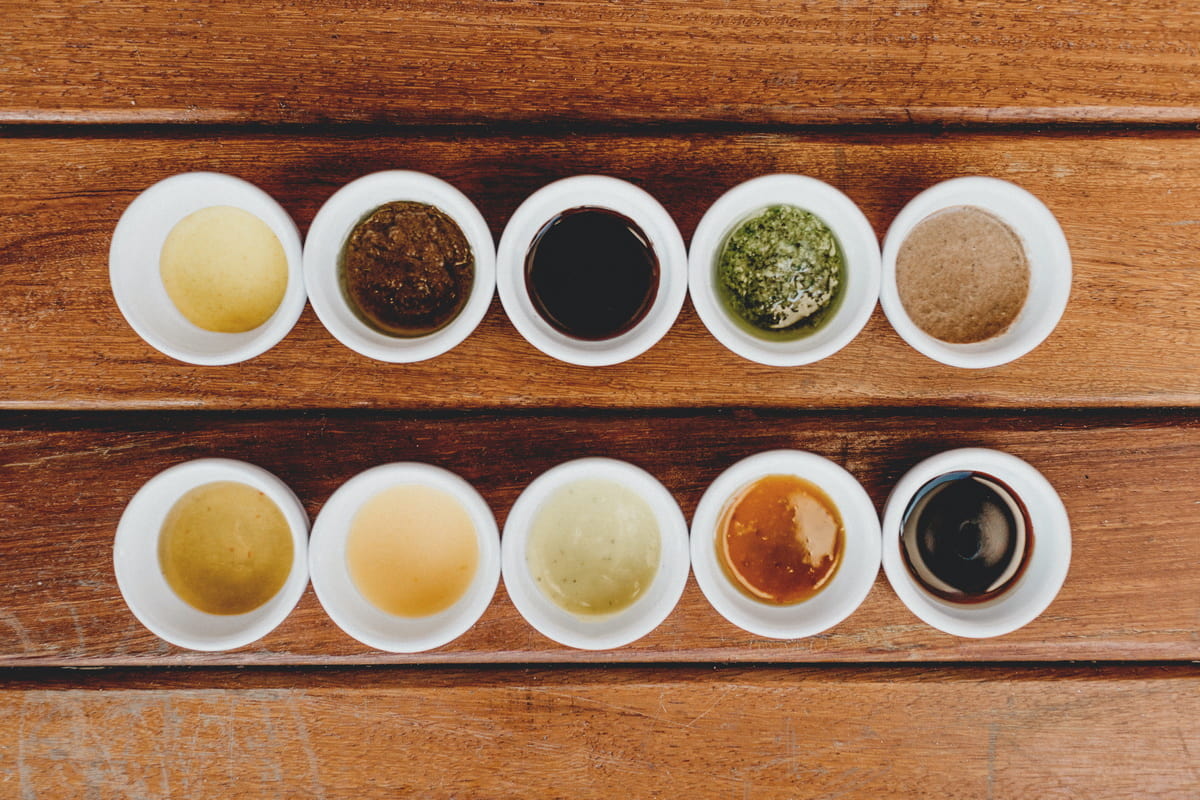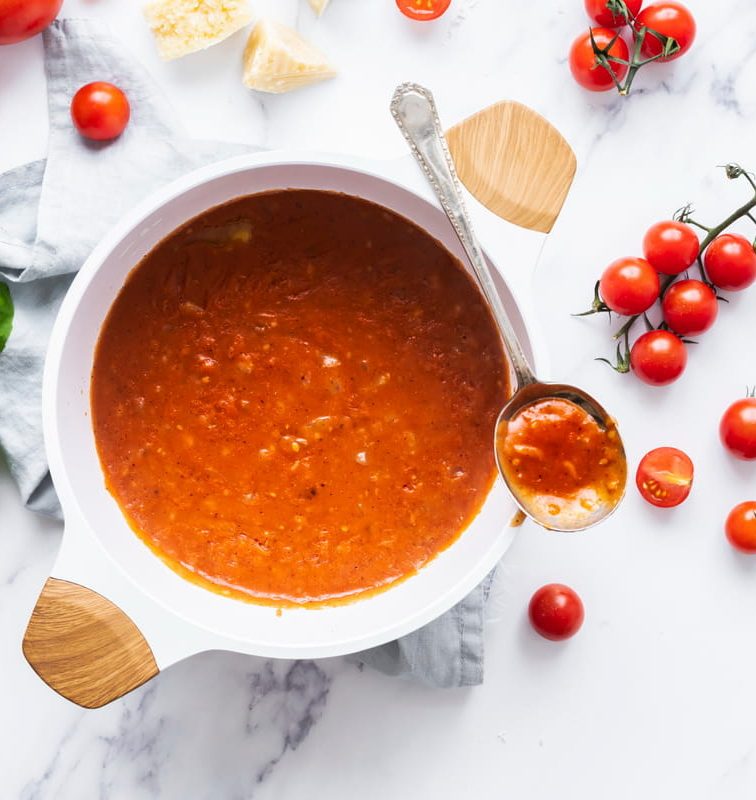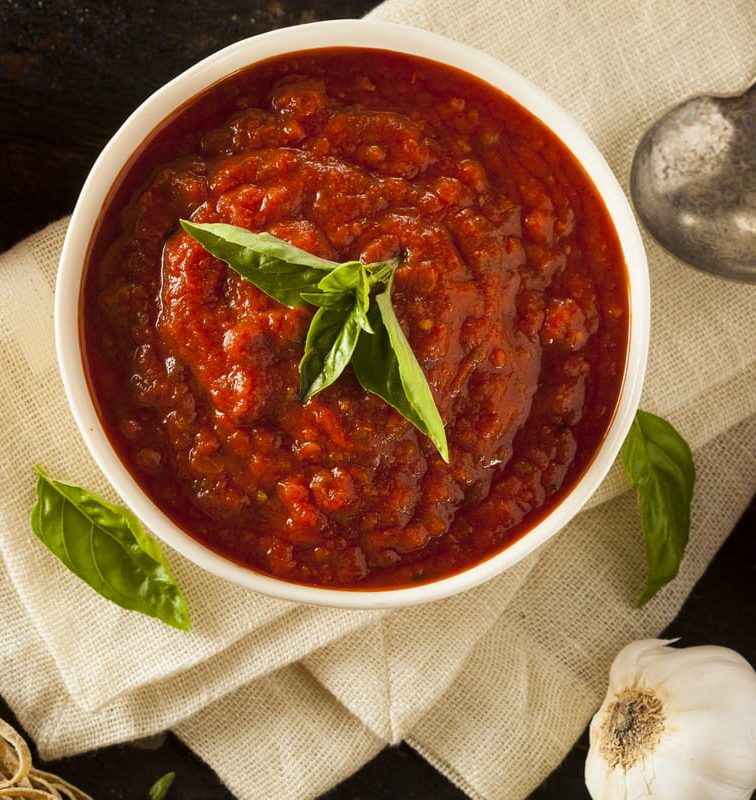Hey there, sauce aficionados! Ready to dip into the tangy, spicy, creamy world of sauces? We’ve cooked up an article that’s dripping with 25 fun facts about sauces that’ll spice up your culinary chatter at the next dinner party.
Seriously, we’re talking about the history, the ingredients, the weird conditions under which some sauces were born—everything you’ve ever wanted to know! Whether you’re a fan of pasta sauce, barbecue sauce, or even good ol’ ketchup, we’ve got something to tickle your taste buds.
So grab a spoon, or a French fry, or whatever you like to dip, and let’s plunge right in!
1. The World’s Oldest Known Sauce: Garum
Get this, food history buffs: Garum, a fermented fish sauce, is considered the world’s oldest known sauce, dating back to ancient Roman times. Its ingredients were anything but appealing by today’s standards—think fermented fish guts and salt. Yet, it was a luxury item back in the day and was even used for medicinal purposes.
According to historical documents, including the works of ancient authors like Pliny the Elder, Garum was made by fermenting fish entrails in salt for several weeks or even months. The resultant liquid was then carefully extracted and used as a seasoning. This concoction was so integral to Roman cuisine that it was traded across various Roman territories, from Italy to Spain and North Africa.
2. Ketchup Was Originally a Fish Sauce
Believe it or not, ketchup started its culinary journey as a fermented fish brine in Southeast Asia, specifically from a Hokkien Chinese word, “kê-tsiap.” This original sauce was a mix of pickled fish and spices and bore little resemblance to the tomato-based condiment we love today.
But here’s where it gets fascinating: when British sailors discovered this saucy wonder in the 18th century, they brought it back to Europe. Only then did it undergo a series of transformations, including the addition of ingredients like mushrooms, oysters, and fruits. It wasn’t until the early 19th century in the United States that tomatoes became the primary ingredient, leading to the ketchup we know today.
According to statistics from The NPD Group, a market research company, ketchup is found in more than 97% of U.S. homes. Now that’s a saucy invasion from its fishy origins!
3. Mayonnaise’s Mysterious Origins
Whisk up some eggs and oil, and voila—mayonnaise. Simple, right? Well, its origins are anything but. While it’s commonly associated with French cuisine, the true origin of mayonnaise is still a topic of debate among food historians.
According to one popular theory, it originated in the French town of Mahón, during the Seven Years’ War in the 18th century. However, there are Spanish cookbooks dating back to the early 17th century that also contain recipes remarkably similar to mayonnaise. In fact, the Spanish argue that the French popularized it only after coming into contact with it in Spain.
Interestingly, the word ‘mayonnaise’ itself is believed to be derived from either the French word ‘moyeu,’ meaning yolk, or from the town of Mahón. Either way, it’s a culinary enigma worth spreading!

Abet Llacer / Pexels
4. Cranberry Sauce: The Thanksgiving Star
Ah, cranberry sauce—the irreplaceable crimson companion to turkey on Thanksgiving! Native Americans were already using cranberries for food and medicine long before the Pilgrims arrived. While the Pilgrims may have had something similar to cranberry sauce, it would have been much more tart due to the absence of sugar.
Did you know that Wisconsin produces more cranberries than any other U.S. state? It’s responsible for nearly 60% of the country’s total production!

Karolina Grabowska / Pexels
5. Hot Sauce is Good For You!
Prepare to ignite your palate and perhaps prolong your life! Hot sauce, full of capsaicin, does wonders beyond just spicing up your meal. It boosts metabolism and has anti-inflammatory properties.
The Scoville scale, which measures the heat of peppers, ranges from zero for bell peppers to over 2 million Scoville Heat Units for the Carolina Reaper, currently the world’s spiciest pepper!
6. Worcestershire Sauce: A Global Fusion
Worcestershire Sauce is a mouthful to say and a feast of flavors to taste! Originally concocted in England in the 19th century, its recipe borrows ingredients from across the globe, such as tamarind from India and fish sauce from Southeast Asia.
When first brewed in 1837 by chemists John Lea and William Perrins, the sauce was so strong that it was deemed inedible. It wasn’t until they rediscovered the fermented concoction in their cellar years later that they realized its flavor had mellowed into something marvelous.

Simply Recipes / Sally Vargas
7. The Bolognese Sauce Misconception
If you think Bolognese sauce is all about being ladled over spaghetti, think again. In Bologna, Italy, where the sauce originated, this rich, meat-based marvel traditionally pairs with broad, flat pasta like tagliatelle. Known in Italy as “ragù alla bolognese,” the sauce contains minimal tomato concentrate, a stark contrast to its tomato-heavy international variations.
To ensure the tradition lives on, the Italian Academy of Cuisine officially registered an authentic recipe for “ragù alla bolognese” in 1982. So, if you’re eating a spaghetti Bolognese, you’re enjoying a dish that many Italians might not even recognize as their own.
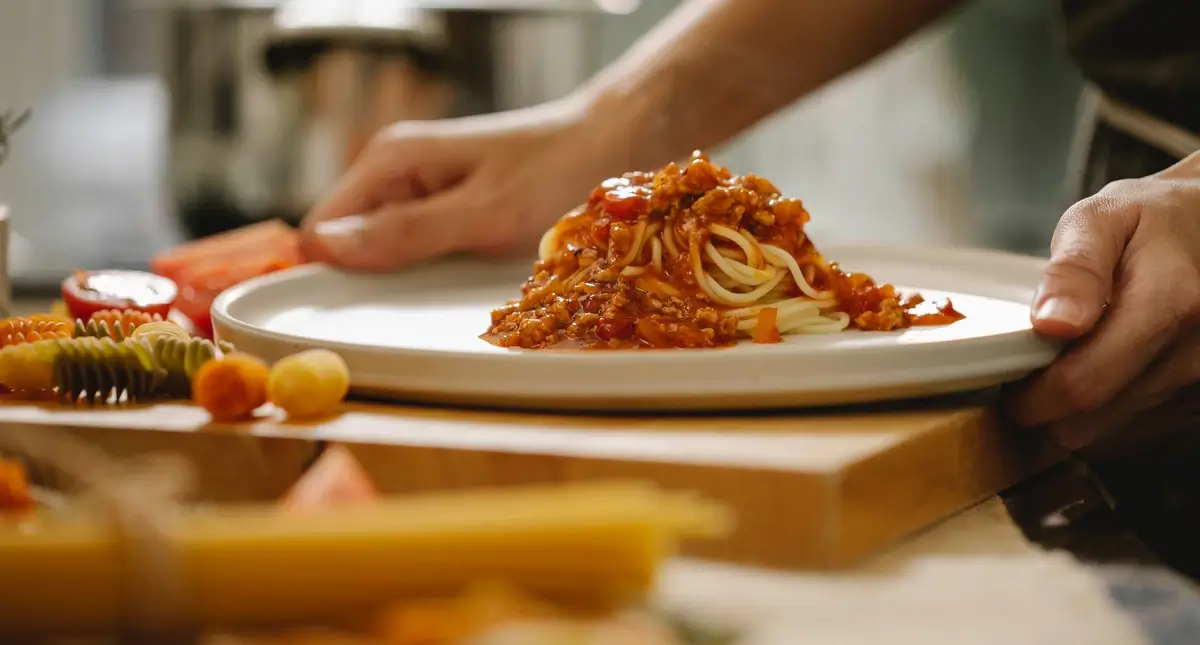
Klaus Nielsen / Pexels
8. Tabasco: The Soldier’s Best Friend
Invented in 1868, Tabasco sauce has traveled beyond the dining table and straight into military packs. It was such a valued companion to soldiers that individual bottles were included in U.S. military C-rations during the Vietnam War. But why stop there? The Tabasco company also makes a gallon-sized jug, sometimes affectionately called the “family jug,” for those who can’t get enough.
The 2-ounce bottle design was modeled after cologne bottles used by Edmund McIlhenny, Tabasco’s creator. So, the next time you’re spicing up your morning eggs, remember this sauce is more than just a kitchen staple; it’s a piece of American history.
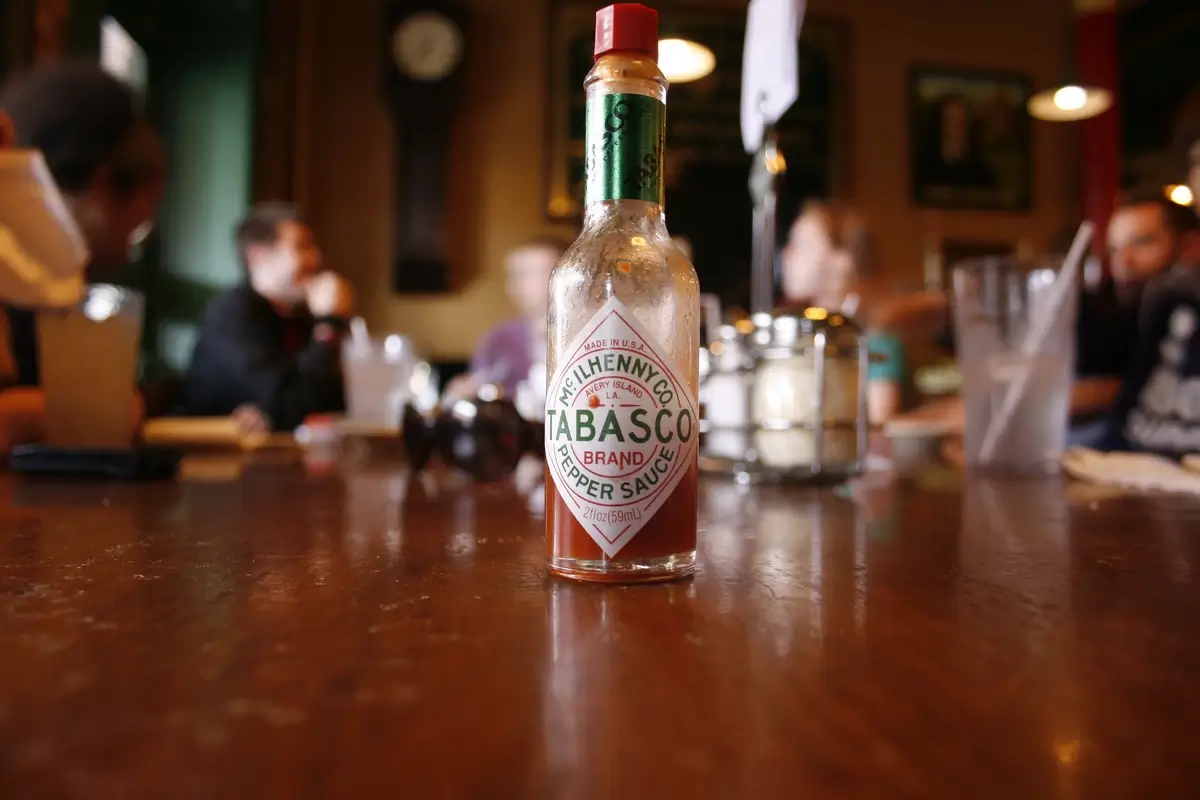
Mitch Bennett / Flickr
9. The Salsa Sauce Dance Connection
Let’s step into the vibrant world of salsa, which isn’t only a dance but also a flavorful sauce. Salsa sauce combines a myriad of cultural culinary influences, blending Native American, Spanish, and African ingredients. Similarly, salsa dancing is a fusion of styles and rhythms from Latin American to African.
New York City was a crucial hub for both salsa the dance and the sauce, popularizing them in the mid-20th century. So, when you dip into a bowl of salsa or spin across the dance floor, you’re actually engaging with a multicultural blend that has been generations in the making.

Marvin Ozz / Pexels
10. The Italian Love for Marinara
Marinara sauce is an Italian staple, often used as a base for pasta dishes and pizzas. The term “marinara” doesn’t mean “mariner’s sauce” in Italian; however, the sauce gained popularity among sailors because its ingredients didn’t spoil easily on long voyages. Originally, it was a simple sauce with tomatoes, garlic, herbs, and onions, but modern versions can include capers, olives, and spices.
If you’re enjoying a spaghetti dish with marinara sauce, you’re not just enjoying a meal; you’re savoring a piece of culinary history that traversed the high seas. It’s a sauce that has navigated its way into global kitchens.

Image source: cooking.nytimes.com
11. The Many Faces of Pasta Sauce
The world of pasta sauce is incredibly diverse, featuring everything from Alfredo to Bolognese, from pesto to carbonara. But the Italian culinary tradition dictates that not all sauces are suitable for all types of pasta. Creamy sauces often pair best with flat noodles like fettuccine, while tomato-based sauces are typically served with round pasta shapes like spaghetti and penne.
While it might seem like just a tasty topping, the sauce you choose for your pasta is a tradition-bound decision. It’s not just about flavor; it’s a culinary code Italians live by.
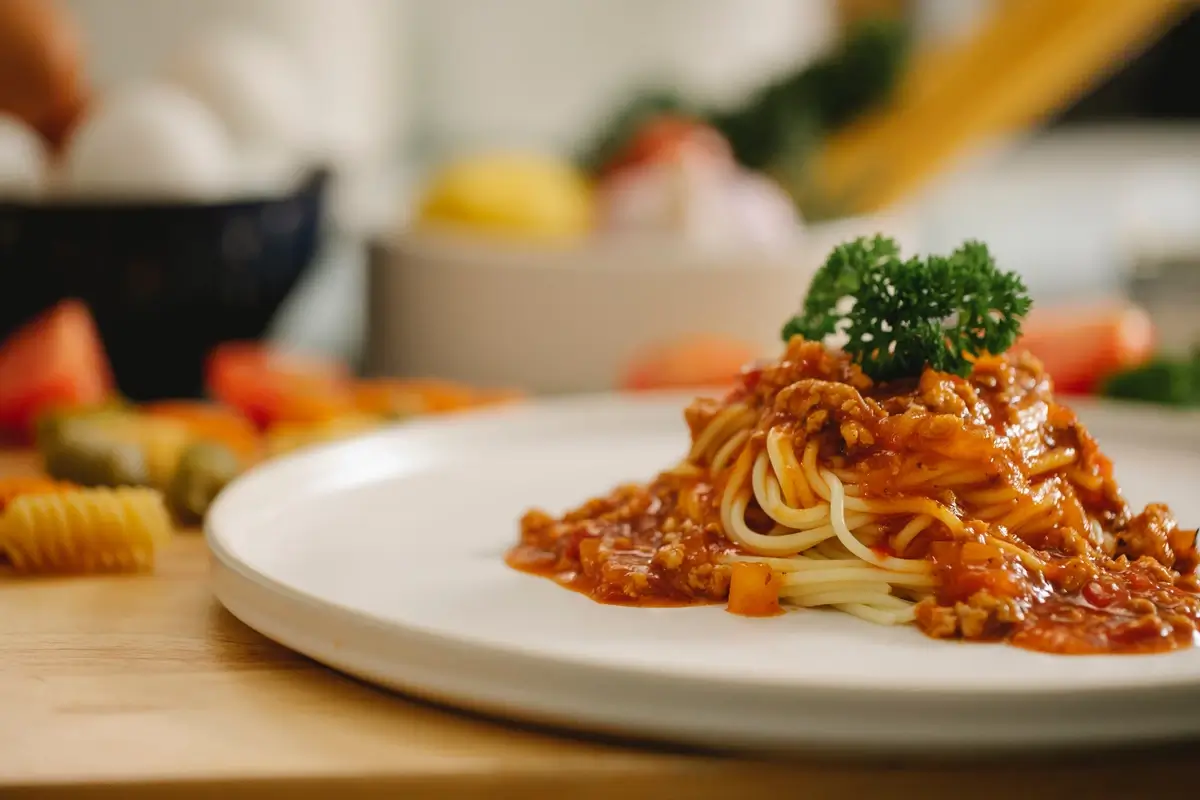
Klaus Nielsen / Pexels
12. BBQ Sauce: The American Classic
BBQ sauce is America in a bottle—red, saucy, and diverse. While it’s a Fourth of July staple, it also has deep regional roots. Kansas City BBQ sauce, for instance, is a molasses and tomato-based delight, whereas South Carolina prides itself on a tangy, mustard-based concoction. Over in Texas, they prefer a spicier, meatier sauce.
BBQ sauce isn’t just a topping; it’s a dialect in the American culinary language. Picture this: a United States map where the borders are drawn not by geography, but by BBQ sauce preference. Welcome to the deliciously divided states of America.
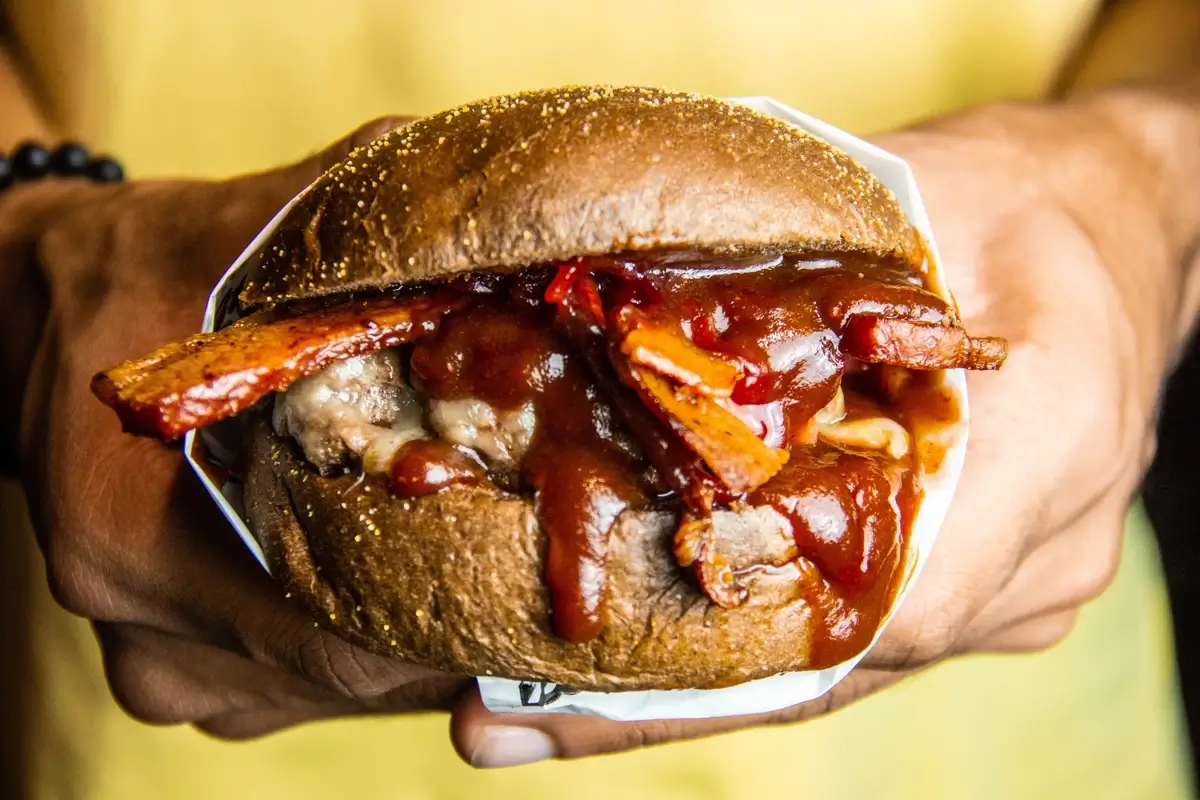
Horizon Content / Pexels
13. Soy Sauce: Not Just for Sushi
Soy sauce dates back over 2,500 years, originating in ancient China. It’s a complex sauce, made from fermented soybeans, wheat, and salt. Its brewing process can sometimes last for months, which makes it a bona fide artisanal product. And its culinary range is vast—it flavors stir-frys, marinades, and even some desserts.
So, if you thought soy sauce was just that little bottle that sits lonely next to your wasabi, think again. It’s the Swiss army knife of sauces—a versatile veteran of the culinary world.
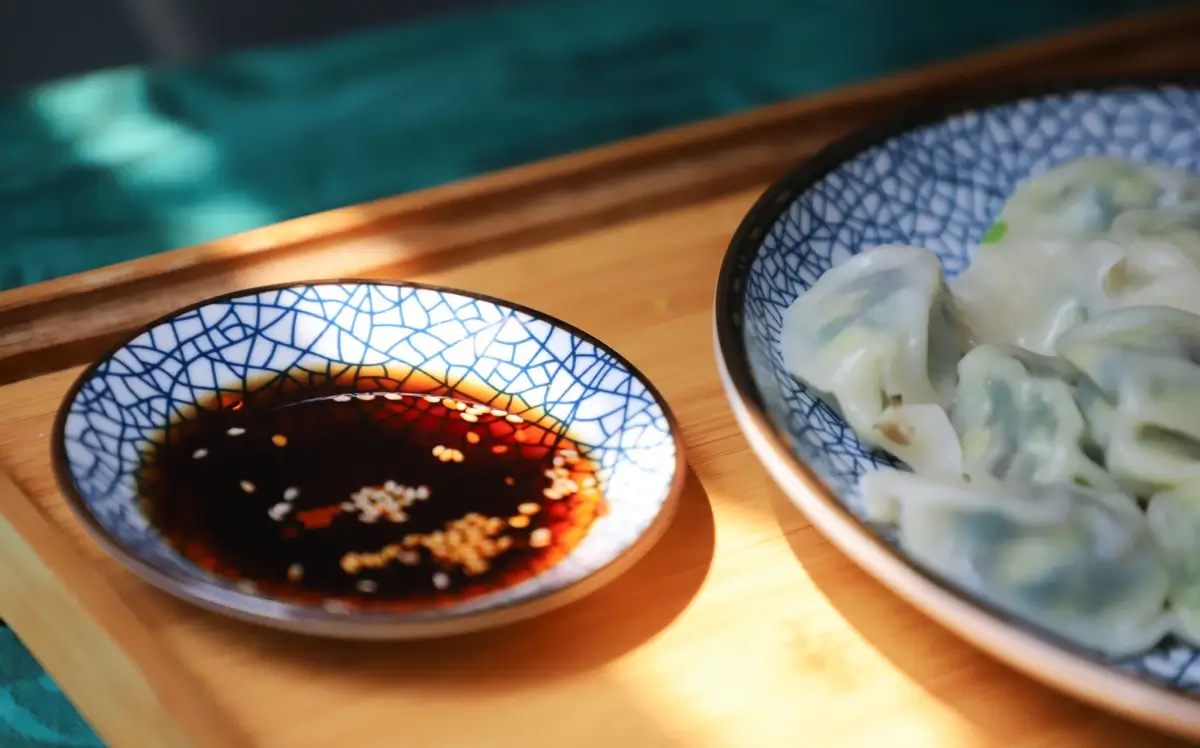
Cats Coming / Pexels
14. The French Mother Sauces
France gave us the Eiffel Tower, Coco Chanel, and yes, the “Five Mother Sauces.” Created by culinary demigod Auguste Escoffier, these foundational sauces include béchamel, velouté, Espagnole, sauce tomat, and hollandaise. And they’re not just standalones; these mothers birth countless “daughter” sauces. Just a little tweak to your béchamel, say adding cheese, and bam! You’ve got Mornay sauce.
So, if you ever find yourself lost in a French kitchen, just remember: Behind every great French dish, there’s an even greater French sauce. And mama, in this case, really does know best.
15. The Creamy Tale of Alfredo Sauce
Alfredo sauce is the epitome of culinary comfort: creamy, buttery, and rich in Parmesan goodness. Contrary to popular belief, this luscious sauce isn’t an old Italian classic. It’s a 20th-century invention by Alfredo di Lelio, a restaurateur from Rome. His goal? To create a dish that would appeal to his pregnant wife’s finicky appetite.
Not only did he win over his wife, but he also enchanted Hollywood icons like Mary Pickford and Douglas Fairbanks. They made sure to spread the word back in the States. So, next time you’re luxuriating in a bowl of Fettuccine Alfredo, just remember: you’re relishing a sauce that was born out of love and Hollywood fame.
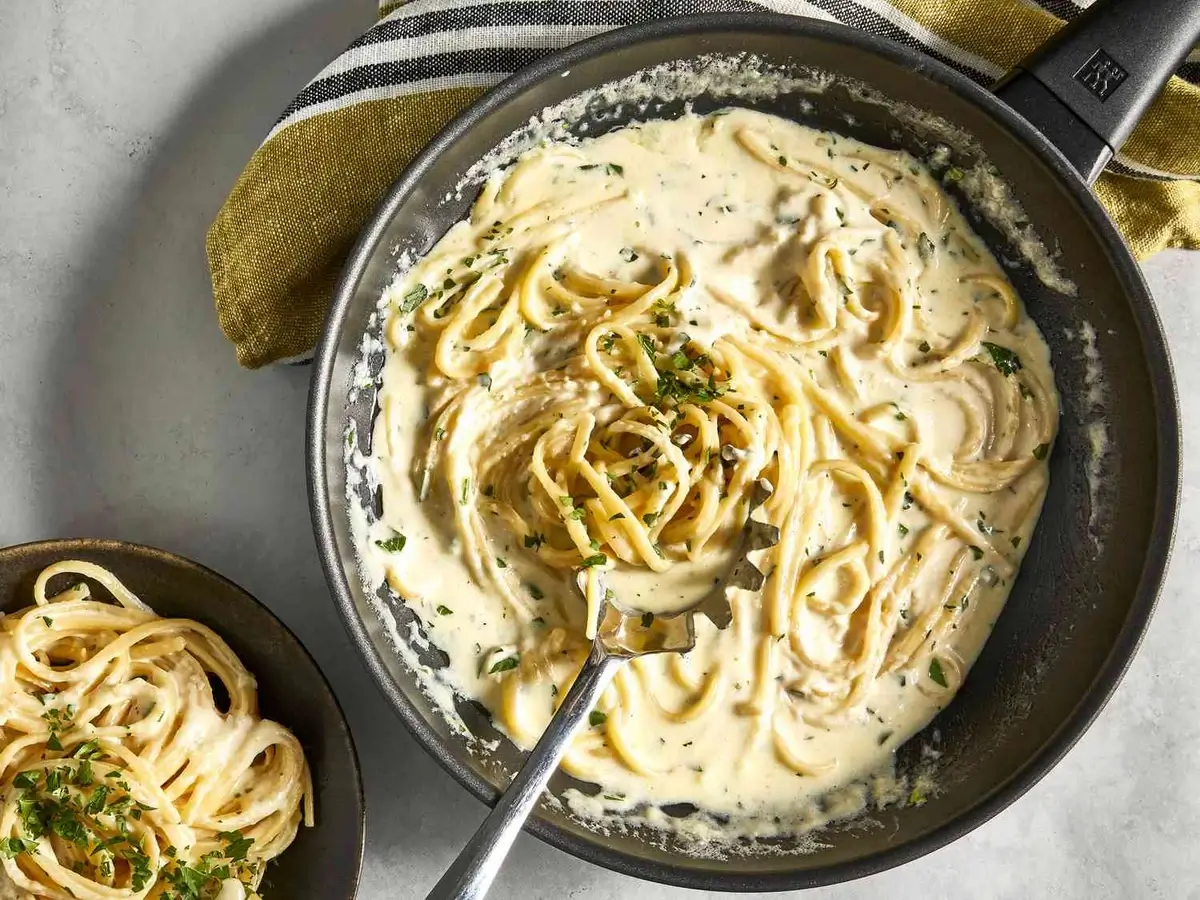
Image source: allrecipes.com
16. The Versatility of Pizza Sauce
Pizza sauce is the versatile genius that makes each pizza unique. Sure, the basic ingredient is tomatoes, but the variations are endless—garlic, basil, oregano, and even red wine can make an appearance. Depending on its composition, pizza sauce can shift the entire flavor profile of your pizza.
Some pizza sauces even defy the tomato tradition, venturing into white sauce or pesto. So, the next time you bite into a slice, remember that you’re tasting a symphony of flavors, carefully composed by a sauce maestro.

Katerina Holmes / Pexels
17. Sriracha: The Spicy Rooster’s Tale
Hold onto your taste buds because here comes the fire-breathing dragon of sauces—Sriracha! Known for its iconic rooster logo, this red-hot sauce hails from Thailand. But let’s give a high-five to David Tran, a Vietnamese immigrant, for popularizing Sriracha in the U.S.
Now, brace yourself: Sriracha isn’t just for pho or ramen. With a base of red chili peppers, garlic, vinegar, and sugar, it’s become the versatile superhero of condiments. Whether you’re slathering it on burgers, mixing it into aioli, or even using it to spice up your cocktail, Sriracha has got you covered. Oh, and before you reach for another squeeze, know this—it has antioxidant properties thanks to the capsaicin in the chilies.
So, the next time you uncork that rooster-branded bottle, remember you’re not just adding heat; you’re also adding a dash of health. Spicy, right?
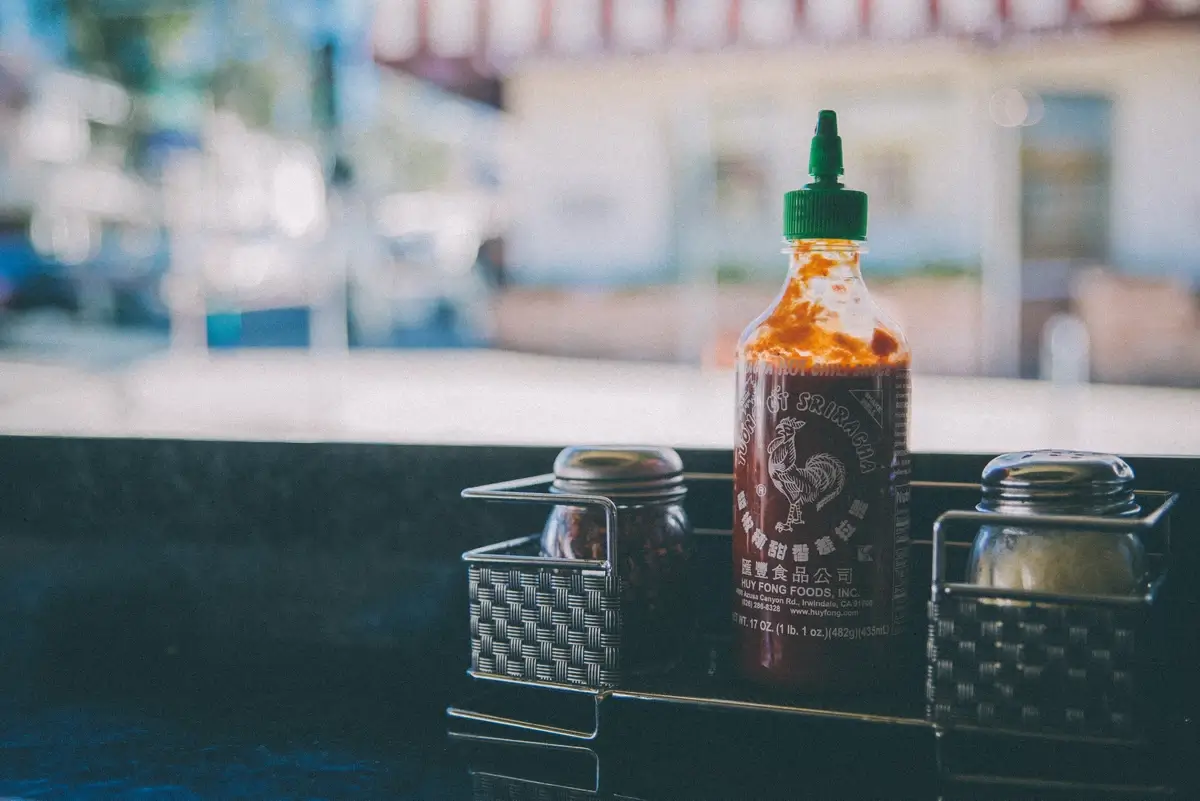
Steven Guzzardi / Flickr
18. The Global Love for Prego Spaghetti Sauce
Launched in 1981 by the Campbell Soup Company, Prego spaghetti sauce quickly won over American households and later gained global appeal. The sauce initially emerged as a strong competitor to Ragu, another market leader. Prego prides itself on using real ingredients like vine-ripened tomatoes and a signature blend of herbs and spices.
However, here’s a fun fact: Campbell’s invested in studying the eating habits of Americans to understand how they consume spaghetti. The sauce’s texture is intentionally designed to stick well to pasta, adhering to the “Western” way of eating spaghetti—namely, with a fork, not with fork and spoon as often seen in Italy. It’s not just about taste; it’s about cultural adaptation, and that’s what makes Prego a worldwide hit.
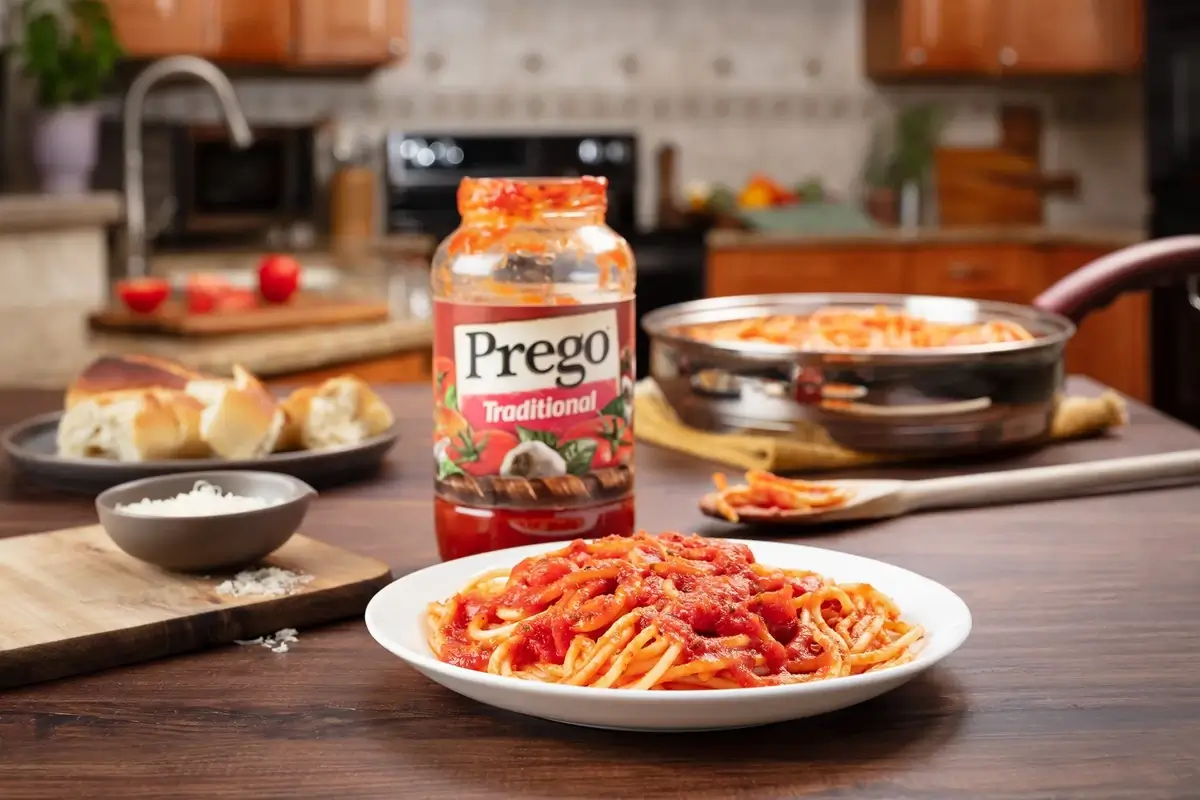
Image source: just-food.com
19. The Rise of Vegan Sauces
If you thought sauces were all about cream, butter, and cheese, think again. Vegan sauces are surging in popularity. Plant-based alternatives like cashews for cream or nutritional yeast for cheese are flipping the script on traditional sauce recipes.
The movement isn’t just about catering to vegans. Many are turning to these options for health benefits or to reduce their environmental footprint. So, vegan or not, these sauces are increasingly making their way into our dishes and our hearts.

_agnesska_ _ / Pexels
20. Hollandaise: The Brunch King
Originating from France, Hollandaise sauce is one of the five “mother sauces” in French cuisine. It’s made through a delicate process of emulsifying egg yolks, clarified butter, and lemon juice. But did you know that despite its French origin, the name “Hollandaise” actually translates to “Dutch” in French? It’s said to be named after the Dutch, who were known for their butter sauces.
Here’s another fact for you: Making Hollandaise sauce requires a careful balance of temperatures. If your egg yolks get too hot, they’ll scramble. Too cold, and the emulsion won’t form. Chefs recommend a temperature range of 145°F to 160°F (63°C to 71°C) for the egg yolks to ensure the sauce is smooth but not scrambled. When executed correctly, it’s a luscious addition that elevates everything from Eggs Benedict to steamed asparagus.

Kiro Wang / Pexels
21. The Big Deal About Small-Batch Sauces
“Small-batch” isn’t just a trendy buzzword—it’s a legitimate claim. In the U.S., the Food and Drug Administration (FDA) doesn’t have a legal definition for “small-batch,” but within the industry, it typically refers to products produced in quantities of less than 1,000 gallons per batch. This limited quantity allows for a higher level of quality control and often means less machinery is involved, which can help retain more of the natural flavors and textures.
But here’s an interesting tidbit: small-batch sauces often use locally-sourced ingredients. Whether it’s a farmer’s market habanero pepper or a backyard-grown basil, these ingredients not only support local economies but also reduce the overall carbon footprint by minimizing transportation needs. According to a 2019 study published in the journal “Resources, Conservation and Recycling,” reducing food miles can have a significant impact on overall environmental conditions.
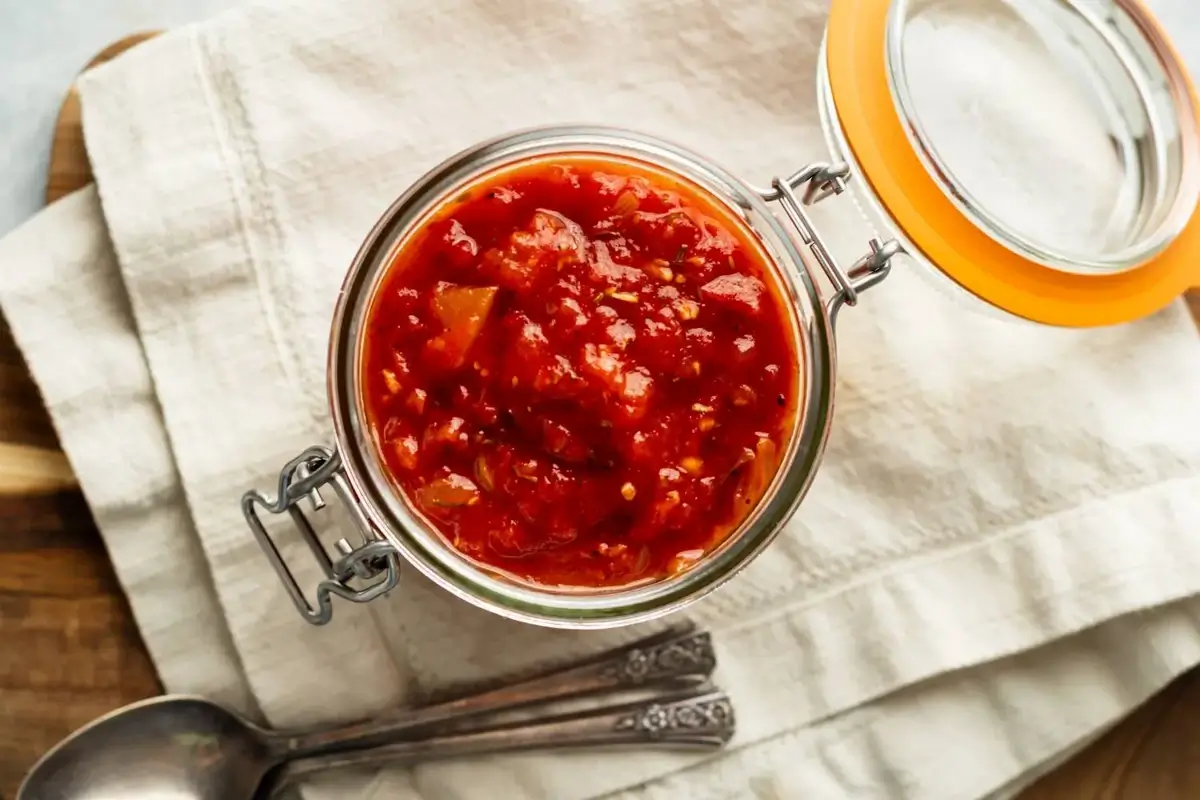
Image source: slenderkitchen.com
22. The Hidden Gems: Regional Sauces You’ve Never Heard Of
Not all sauces get their moment in the spotlight. Take, for example, the Serbian Ajvar, a scrumptious red pepper and eggplant spread. Or how about the Filipino Banana Ketchup? Yes, you heard that right—bananas.
Let’s not forget the exotic Peruvian Aji Verde, a cilantro and jalapeño sauce that will have you doing the salsa—no dance lessons required. So go ahead, let your taste buds travel to far-off places, and bring some lesser-known regional sauces into your kitchen.
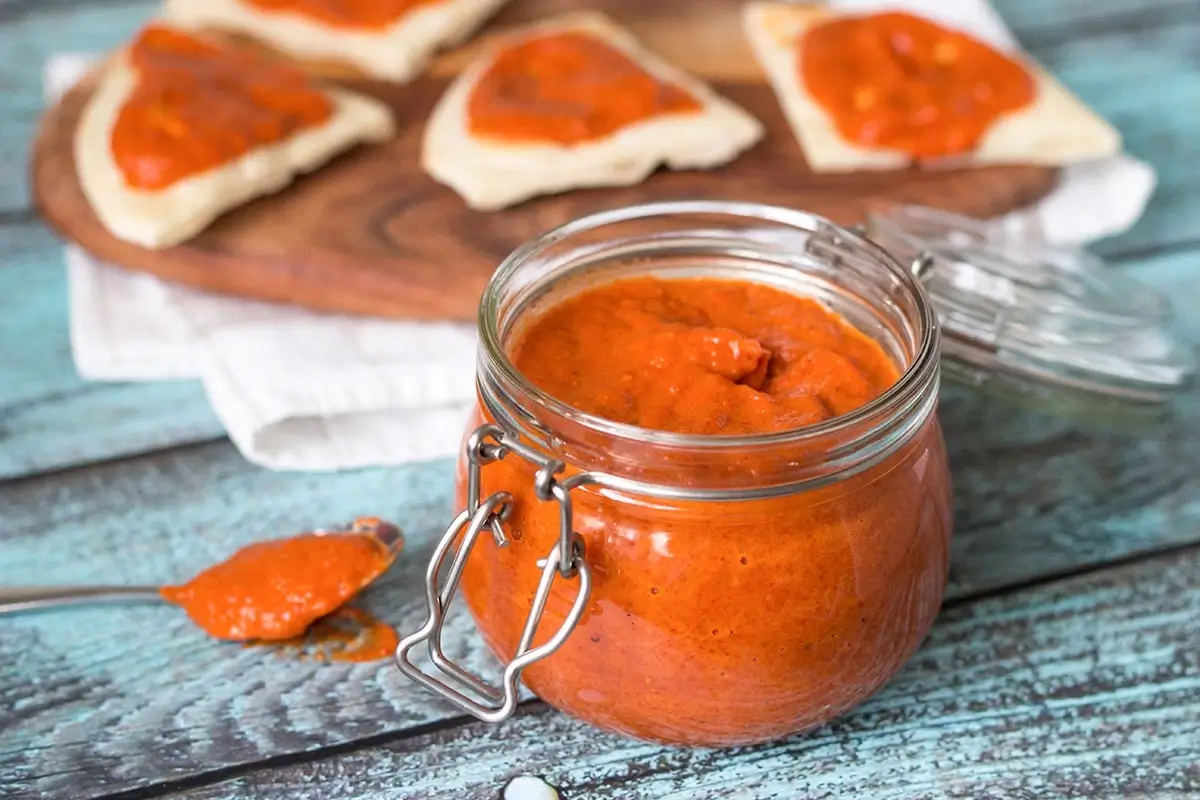
Image source: cookingtheglobe.com
23. Pepper Sauce: Spice Up Your Life
Pepper sauce is a global affair, catering to diverse palates with its multiple variations. Western pepper sauces often rely on the potency of black or white peppercorns and may include a creamy base, such as in the French au poivre sauce. On the other hand, Asian pepper sauces utilize a range of peppercorns, such as the numbing Szechuan pepper, and may incorporate other spices and fermented ingredients.
Now for something you might not know: Capsaicin, the compound that gives peppers their heat, has been shown to boost metabolism and even improve mood. It’s not just your imagination; spicy food does make life more exciting!
In the American South, pepper sauce often refers to a vinegar-based condiment served with greens, while in Trinidad and Tobago, pepper sauce might mean a fiery blend of Scotch bonnet peppers and herbs.
So, the next time you reach for that bottle of Tabasco or consider spicing up your stir-fry with some Szechuan pepper sauce, remember: you’re not just adding flavor, you’re also giving yourself a mini-gastronomic tour of the world.
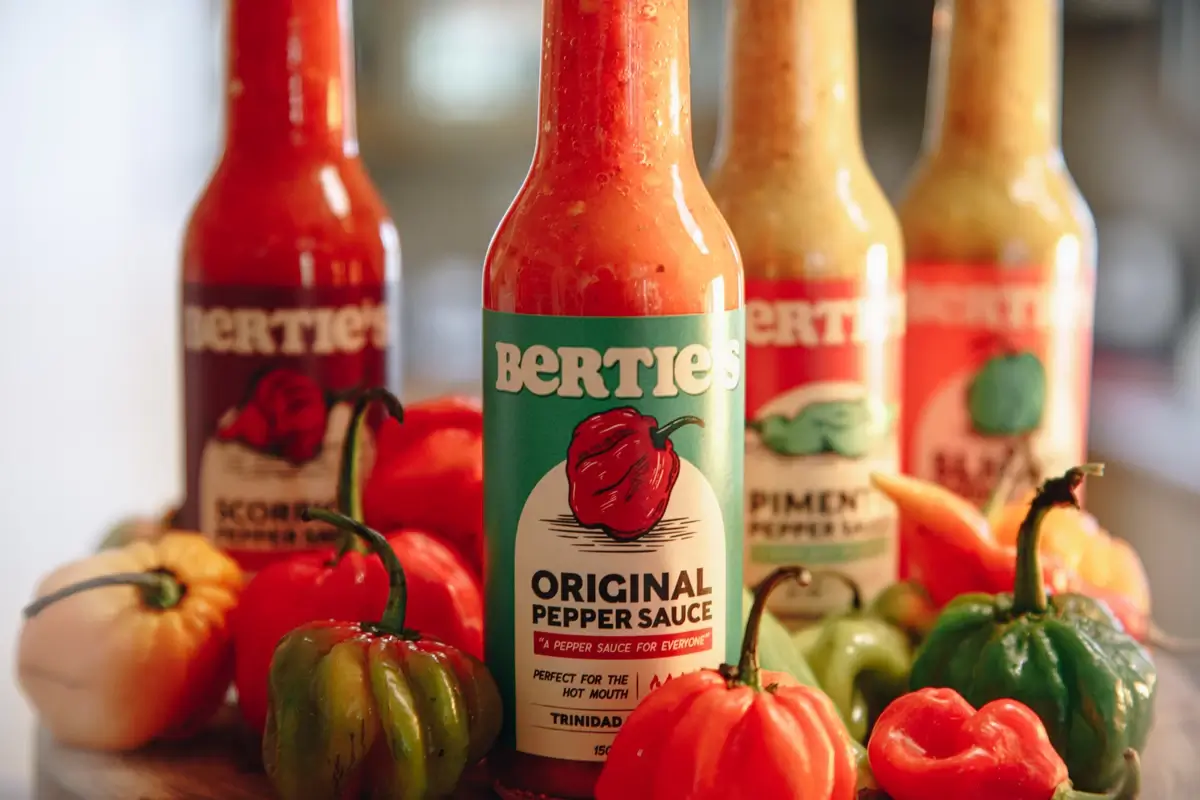
Image source: images.squarespace-cdn.com
24. Dress to Impress: The World of Salad Dressings
Salad dressings are a blend of culinary art and science, tasked with bringing out the best in your greens. There are generally three types of dressings: vinaigrettes, creamy dressings, and cooked dressings. Vinaigrettes typically consist of oil and vinegar, while creamy dressings, such as ranch or Caesar, include mayonnaise or yogurt as a base. Cooked dressings like hot bacon are often made with a cooked element such as bacon fat.
Now, let’s talk about Caesar dressing, which contrary to popular belief, didn’t hail from Italy but was actually invented in Tijuana, Mexico, by Caesar Cardini in 1924. Who would have guessed that this star of salad dressings would have such a surprising backstory? It’s the plot twist in the salad world’s soap opera!
Did you know the popular ranch dressing has its roots in the Alaskan wilderness? It was created by a plumbing contractor turned cowboy, Steve Henson, who served it to his guests at his dude ranch. Talk about a multi-talented individual!
So, whether you’re a fan of the elegant vinaigrette or the hearty ranch, remember that each bottle of dressing comes with its own unique blend of ingredients and backstory. Cheers to the unsung heroes that make our salads sing!
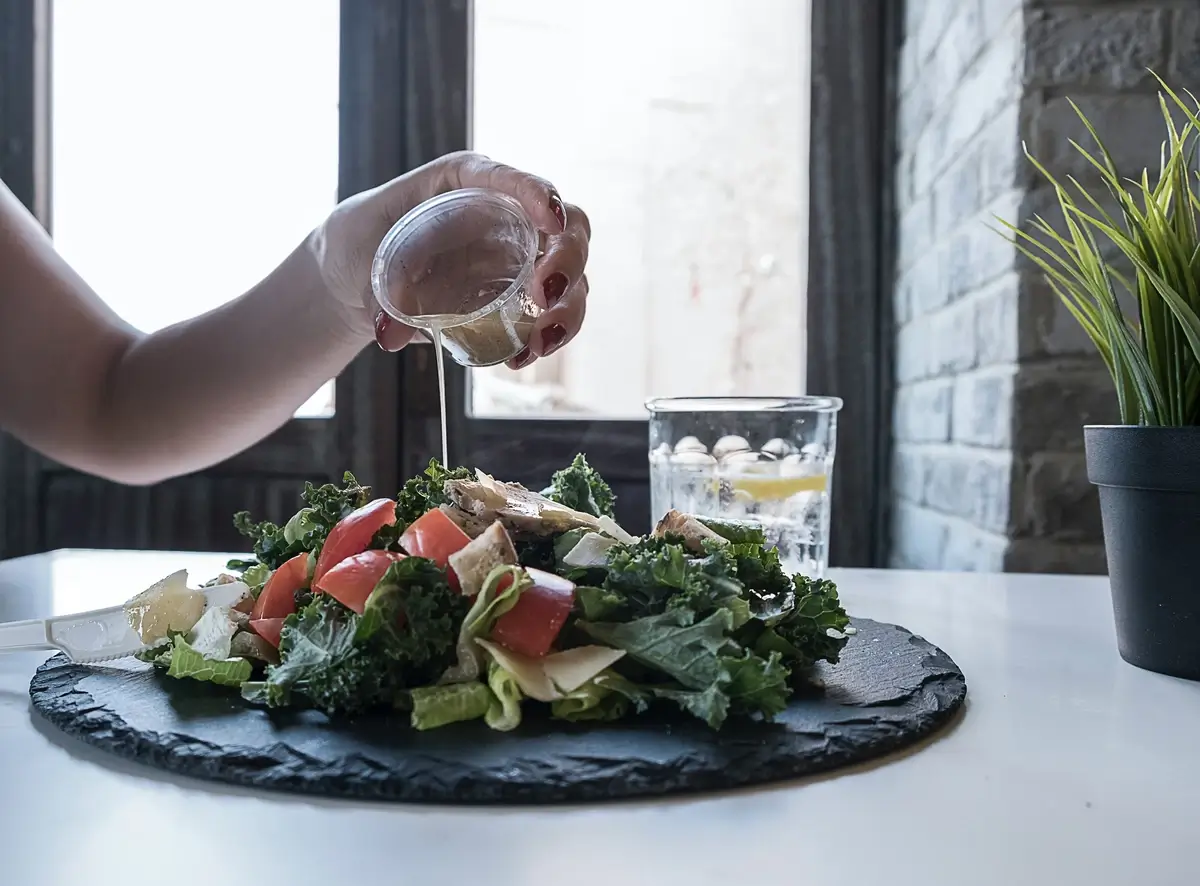
The Lazy Artist Gallery / Pexels
25. Teriyaki: The Saucy Samurai of Flavors
Listen up, food enthusiasts! Teriyaki might be as Japanese as a Zen garden, but this delightful sauce has truly conquered global palates. In Japanese, “teri” means luster, and “yaki” means to grill or broil. When you mix them, you get a shiny, grilled dish, often chicken or beef. It’s not rocket science, but it might as well be, considering how the combination can elevate a meal to heavenly status.
However, don’t be fooled into thinking it’s simply soy sauce’s glamorous cousin. Traditional teriyaki is a mix of soy sauce, sake or mirin, and sugar or honey. The mixture is brought to a boil and then reduced to a syrupy consistency. Did you know that in Japan, they often use fish like yellowtail, marlin, or skipjack tuna instead of the chicken and beef more common in Western variations? Yes, teriyaki is an international player, comfortable in sushi bars and burger joints alike.
So, the next time you’re dousing your dish in teriyaki sauce, savor the nuanced notes of sake and honey and remember that you’re experiencing a taste that’s crossed oceans and cultural boundaries to land on your plate.

RDNE Stock project / Pexels
FAQ
What are 10 interesting facts about sauces?
- The Mother of All Sauces: In French cuisine, there are five “Mother Sauces” — béchamel, velouté, espagnole, sauce tomate, and hollandaise. From these foundational fluids, a whole family tree of derivative sauces can be created. It’s like the culinary equivalent of ancestry.com but more delicious and less controversial.
- Aged to Perfection: Ever wonder why Worcestershire sauce tastes so complex? It’s because it is fermented for 18 months! Talk about playing the long game. Each bottle is practically a vintage edition of flavors.
- Ketchup’s Fishy Beginnings: The ever-popular tomato ketchup was actually inspired by a fermented fish brine from Southeast Asia. In its original form, there was not a tomato in sight. So basically, your favorite hot dog condiment is the evolutionary equivalent of a fish leaving the ocean and growing legs.
- Soy Sauce Stardom: Soy sauce is made by fermenting soybeans and wheat with a particular type of mold, then with specific bacteria and yeasts in a brewing process. Oh, and it dates back to the Western Han dynasty of ancient China, making it around 2,500 years old. It’s like the Morgan Freeman of sauces—timeless and universally loved.
- Hot Sauce Heat Metrics: Ever hear of the Scoville scale? It measures the spiciness of peppers and hot sauces. While bell peppers score a wimpy zero, the Carolina Reaper swings in at over 2.2 million Scoville Heat Units (SHU). That’s not just a sauce; that’s a culinary Molotov cocktail.
- Mayo Across the World: While you might associate mayonnaise with sandwiches or potato salads, in Japan it’s often used as a topping for pizza and pasta. So next time someone says you’re weird for dipping your fries in mayo, just say you’re being internationally cultured.
- BBQ Sauce Variety: Think all BBQ sauces are born equal? Think again. Depending on the American region, you can find vinegar, mustard, or even mayonnaise-based BBQ sauces. It’s like the United Nations, but instead of discussing global policy, they’re arguing about pork ribs.
- Pesto’s Ancient Ancestor: Pesto, that lovely green Italian sauce, has roots in the Roman era. The ancient Romans ate a paste called “Moretum,” which was made of garlic, salt, cheese, herbs, and olive oil. Fast forward a couple of millennia, and you have the modern, basil-based pesto. Old but gold!
- Sriracha, The Rooster Sauce: One of the most iconic hot sauces, Sriracha, is known for its rooster logo. But did you know it’s actually named after the city of Si Racha in Thailand? Interestingly, the Thai version is generally milder and sweeter than the more famous Huy Fong version.
- The Caviar of Condiments: Ever heard of “Pumpkin Seed Oil”? In some parts of Austria and Slovenia, this nutty, aromatic elixir is used like ketchup, liberally poured over salads and ice cream. Yes, you read that right—ice cream. Sweet meets savory in an unexpected twist!
What was the first sauce ever made?
Ah, the beginnings of sauce are rather murky—much like a well-cooked gravy. However, some culinary historians point towards ancient fermented fish sauces like “garum,” used in ancient Greece and Rome, as one of the earliest. Imagine a salty, fishy, umami-blasted concoction, and you’ve got yourself a garum. Yes, we’ve come a long way, baby!
What is an interesting fact about white sauce?
Béchamel, commonly known as white sauce, has aristocratic origins. It’s named after Louis de Béchamel, a 17th-century French financier and steward to Louis XIV. I find it quite amusing that a man whose job revolved around crunching numbers would end up lending his name to a sauce so creamy, it makes arithmetic look dry.
What are the 5 mother sauce facts?
- Béchamel: A creamy white sauce made of milk, butter, and flour. Often serves as the base for cheese sauces like Mornay.
- Velouté: This one’s like béchamel but replaces milk with light stock like chicken or fish. “Velouté” means “velvety” in French, because the French understand the poetry of sauce.
- Espagnole: A darker, complex sauce involving brown stock, tomatoes, and brown roux. It’s the base for demi-glace, which is like the Dom Perignon of meat sauces.
- Sauce Tomat: It’s not just tomato sauce, darling. The French version often incorporates stock and meat, making it a richer cousin of your regular marinara.
- Hollandaise: A sauce so delicate, it could write love poetry. Made from emulsified egg yolk, butter, and lemon juice, it’s like the Botticelli of sauces.
Why is sauce called sauce?
The term “sauce” comes from the Latin word “salsus,” meaning “salted.” The Old French term “sauce,” from which the modern word is derived, could be used to refer to both gravies and relishes. And here we are today, saucing our way through life like it’s a spicy tango.
What’s the most famous sauce?
Oh, this is a tough one—like asking to pick a favorite child. However, ketchup might take the crown due to its global ubiquity. From American fast-food joints to remote villages, it’s practically everywhere. Its fame knows no borders, unlike some pop stars we know.
How many sauces exist?
An exact number? Ah, you may as well ask how many stars twinkle in the sky! There are thousands of sauces globally, with each culture, region, and sometimes even individual families having their unique creations. It’s a saucy multiverse out there!
What are the 5 main reasons for using sauces?
- Flavor: A well-crafted sauce can make your meal sing like a nightingale on a moonlit evening.
- Moisture: Sauces can keep your meats and veggies from drying out, much like a hydrating facial mist for your food.
- Visual Appeal: A drizzle here, a dollop there, and voila! Your dish looks like it’s ready for its Instagram debut.
- Texture: A creamy sauce can balance out the crunch of a dish, creating a symphony of textures in your mouth.
- Culinary Elevation: A good sauce can elevate a simple dish to gourmet status. You can dress anything in a tuxedo if you try hard enough!
What are the 4 purposes of a sauce?
- Enhancing Flavor: The primary role, as you might expect, is to make things tasty.
- Contributing Moisture: No one likes dry chicken or cardboard-like fish. A splash of sauce, and you’re saved!
- Improving Presentation: A splash of color or a decorative zigzag can take a plate from blah to voilà!
- Unifying Ingredients: Sometimes a sauce serves as the culinary glue that binds disparate elements into a coherent dish.
What is sauce slang?
In slang terms, “sauce” is often used to describe someone who exudes confidence, style, and charisma—like they’ve been marinated in a blend of charm and chutzpah. For instance, “That guy’s got the sauce!” suggests he’s got that indefinable, irresistible quality that makes him stand out. So yes, whether in the culinary or social realm, never underestimate the power of the sauce!


